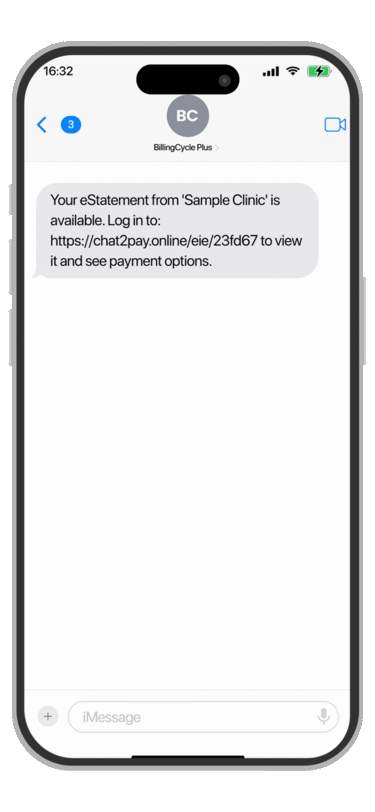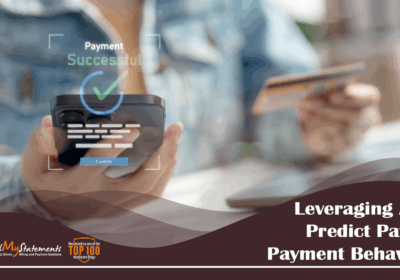7 Digital Patient Payment Collection Strategies for 2026

Rising healthcare costs have placed increasing pressure on both patients and providers. As consumers select higher-deductible plans to lower monthly premiums, they shoulder greater out-of-pocket expenses. This shift, combined with accelerating medical costs, has made patient payment collection a mounting concern. In the past five years, deductibles for single workers have climbed 8%, while out-of-pocket spending rose another 6.4% in from 2024 to 2025 alone.
For providers, this financial burden has intensified operational challenges. Studies show that billing and insurance activities account for approximately 62% of healthcare administrative costs. To maintain financial stability and prevent revenue loss, organizations must adopt modern digital payment strategies that streamline collections and improve patient engagement. This article outlines practical approaches billers can implement to strengthen recovery efforts and drive sustainable revenue growth.
How to Increase Collections with Digital Patient Payments in 2026
According to the American Hospital Association, health systems are still experiencing 19.5% fewer inpatient visits and 34.5% fewer outpatient visits than in 2019. Although collecting patient revenue at pre-pandemic levels might be unattainable for now, healthcare organizations can still take steps to improve their payment collection rates in 2026.
1. Use a Cloud-Based Patient Billing System
Cloud-based patient billing stores, accesses, and manages all of a provider’s medical billing data on remote servers. Rather than needing to maintain a local server onsite or dedicated hardware, cloud-based data can be accessed from any location with an internet connection. Utilizing this technology provides the framework for artificial intelligence and machine learning technology which helps automate various steps in the patient billing process. Additional benefits of a cloud-based patient billing system include reduced expenses, increased productivity, better security, and access to better data and analytics.
2. Implement Digital Patient Payment Plans
Many individuals are struggling to make bill payments, and the few appointments that they are willing or able to schedule might now be even more expensive for them due to changes in coverage. Instead of paying co-pay or deductible in person, all telehealth visits will need to be billed via email, mail, or phone. When the bill finally comes, patients might be shocked and stressed to realize they incorrectly budgeted for their appointment or were unable to set money aside in advance.

Payment plans help give patients peace of mind about gradually paying off their out-of-pocket amount and will result in more consistent collections over time. Offering payment plans as an easy way to fund a doctor’s visit could also encourage an increase in elective services.
Pro Tip: Check out our Credit Card on File eBook for more information about payment plans!
3. Offer Digital Patient Payment and Communication Tools
Digital Communication tools, including SMS patient statements / payment reminders and intuitive customer service chatbots, help simplify the collection process for patients.
eStatements
Offering patient eStatements is an effective way for providers to reach patients directly, appeal to their preferences, and streamline the backend billing process. Additional benefits include:
- Save money on postage and supply costs
- Cater to patient preferences for increased patient engagement
- Save time and ensure compliance with integration technology
- Improve collection rates
- Shortened billing cycle
- Eco-friendly
Text Payments and Alerts
Text message payments and reminders are a patient payment service that allows for seamless access to paying medical bills on the go. Integrating this secure and powerful system allows medical staff to engage patients with a simple text message, which is exactly what patients want. In fact, 89% of consumers want to use text messaging to communicate with businesses.

Text payment reminders reach the patient directly and provide secure access to complete their payment either via linking to their secure portal or via text message response. Patients who are reached in their preferred method are much more likely to make the requested payment.
Chat-to-Pay
Artificial intelligence and automation technology are helping to mitigate severe healthcare staffing shortages, especially within revenue cycle management and patient payment collections. Providing a customer service chatbot allows patients to ask questions about their bill, set up payment plans, and even make complete payments.
4. Improve Billing Security

The continual transition to digital healthcare services severely intensifies healthcare cybersecurity threats. In fact, 93%of healthcare organizations have experienced a data breach over the past three years, while 57% have had more than five data breaches during this time. The security of a patient’s records, billing information, and claim data is paramount to building trust between the provider and the consumer. Only work with patient billing companies that earned a HITRUST CSF certification, which serves to protect both provider and patient against data breaches. Using a digital patient payment service with heightened security measures helps gain trust from the patient, which can help encourage timely and complete payments.
5. Follow Up
While following up may seem like an obvious or minor step, it can significantly affect patient payments. Many patients with outstanding balances may have simply forgotten to pay, especially given the challenges they face today. These may include caring for children or elderly parents, managing remote work or job loss, health concerns, and the constant stream of stressful news.
Establishing a structured follow-up plan for your billing department can make a meaningful difference. For example, your team can reach out by phone to patients with overdue balances. During these conversations, staff should be prepared to review available payment options and, when possible, process payments over the phone.
When these calls are presented as courtesy reminders rather than collection efforts, patients often appreciate the proactive communication and the opportunity to avoid late fees while gaining a clearer understanding of their payment options.
Text message reminders can also be effective, providing a less intrusive way to prompt patients about outstanding balances while maintaining a positive relationship.
6. Price transparency & Cost Estimation Tools
Price transparency and cost estimation tools are becoming essential components of digital patient payment systems in 2026. As patients continue to take on a greater share of healthcare costs, they increasingly expect real-time, accurate estimates of what they will owe before receiving care. Modern digital platforms now integrate automated cost calculators and personalized billing dashboards that provide clear breakdowns of patient responsibility, insurance coverage, and out-of-pocket expenses. This transparency not only empowers patients to make informed financial decisions but also builds trust, leading to faster digital payments and improved overall satisfaction with the billing experience.
7. Plan for the Future
Patient visit volumes continue to fluctuate, creating both challenges and opportunities for medical practices. This period offers a valuable chance to evaluate the revenue cycle and identify areas for improvement. Planning now for 2026 helps establish a stronger, more resilient financial foundation for the years ahead.
Consider updating your practice’s billing software or restructuring the billing department to improve efficiency. If collecting data on patient satisfaction remains a goal, develop and implement a survey plan that includes both distribution and analysis. This moment provides an ideal opportunity to strengthen and modernize your revenue cycle in preparation for the year ahead.
Pro Tip: If you’re not sure where to start, review these 9 patient billing KPIs to determine the strength of your patient collection system.
Final Thoughts
MailMyStatements is a technology-driven patient statement and payment vendor that offers managed patient billing needs, varying from payment plan capabilities to statement design. Get in touch with us today to learn more about our various solutions to help increase patient collections.
![]()



